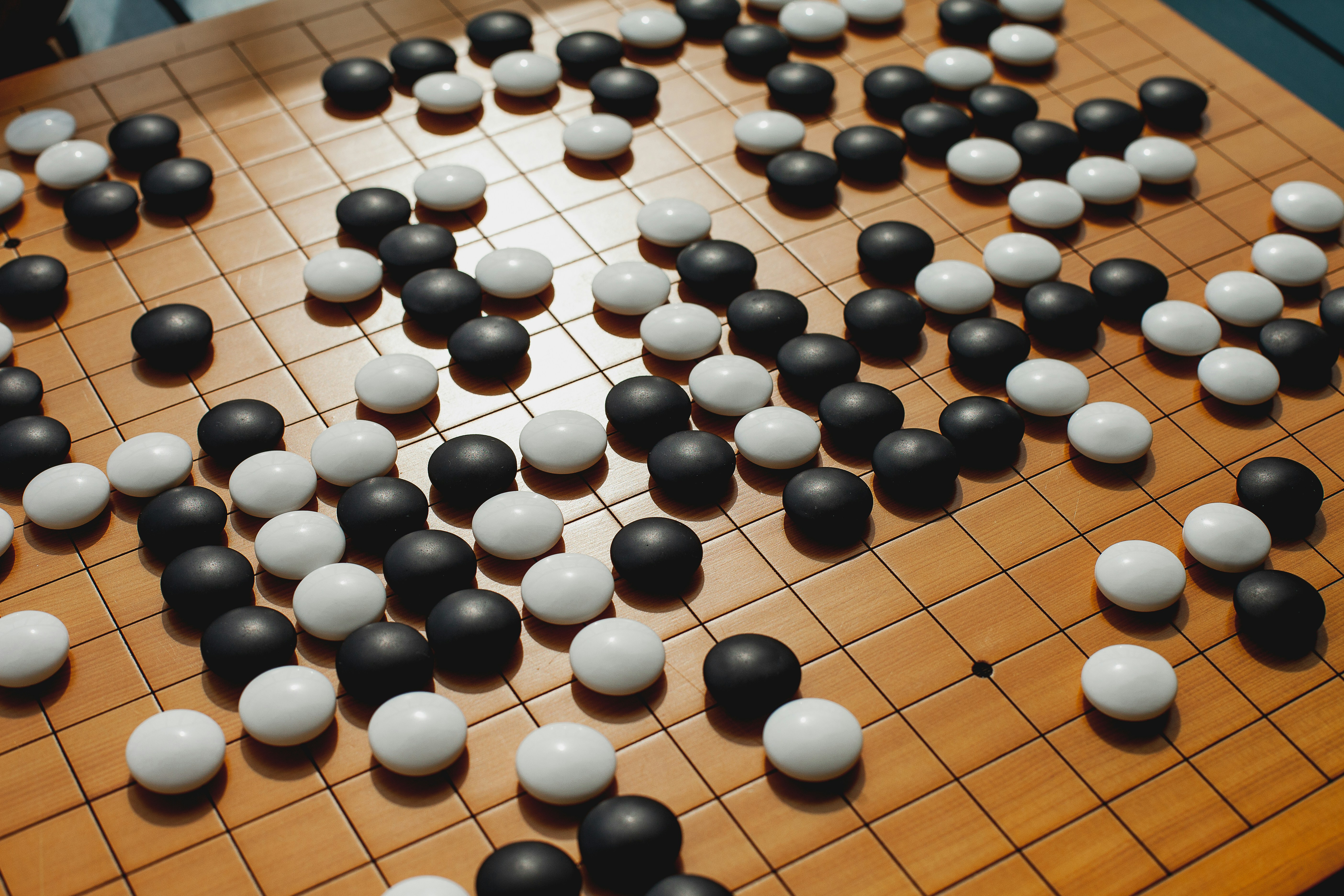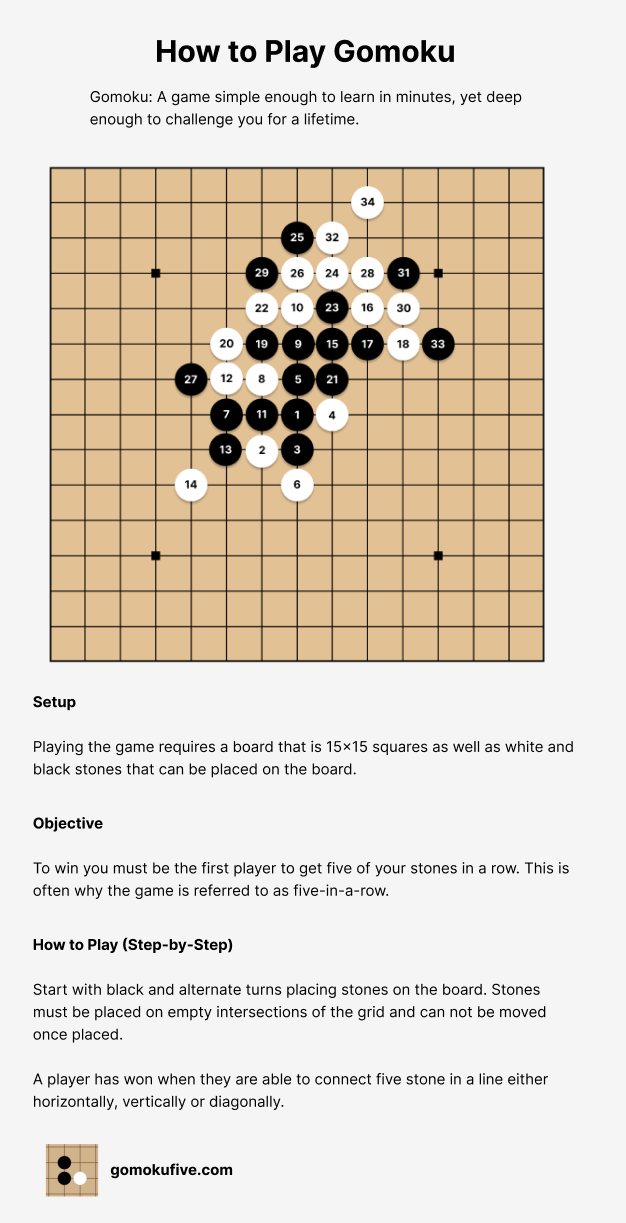Play Gomoku Online
Challenge yourself or play against others in this classic five-in-a-row game

How to Play Gomoku

Want to play Sudoku online? play Sudoku at sudokupulse.com
Gomoku Opening Patterns
Mastering the opening moves in Gomoku gives you a strong advantage. Here are some of the most popular and effective opening patterns, along with diagrams and explanations to help you start your games with confidence.
1. Center Opening (Tengen)
Description: The first move is placed in the exact center of the board (called "Tengen"). This gives maximum flexibility and control over the board.
. . . . .
. . . . .
. . X . .
. . . . .
. . . . .
Why it works: From the center, you can expand in any direction and respond to your opponent’s moves easily.
2. Diagonal Opening
Description: The first stone is placed one space away from the center, often diagonally. This can set up diagonal threats and force your opponent to play defensively.
. . . . .
. . X . .
. . . . .
. . . . .
. . . . .
Why it works: Diagonal openings can quickly lead to double threats and are less predictable than center openings.
3. Side Opening
Description: The first move is placed two or three spaces away from the center, closer to the edge. This can surprise your opponent and create unique attack angles.
. . . . .
X . . . .
. . . . .
. . . . .
. . . . .
Why it works: Side openings can catch your opponent off guard and allow for creative strategies, but can be risky if not followed up well.
4. Classic Three-Three (San-San)
Description: The first stone is placed at the 3-3 point from the edge (third row and third column). This is a classic move in both Gomoku and Go.
. . . . .
. X . . .
. . . . .
. . . . .
. . . . .
Why it works: The 3-3 point is hard to block and can quickly develop into multiple threats if not answered properly.
Tips for Openings
- Control the center whenever possible for maximum flexibility.
- Try to create multiple threats early to put pressure on your opponent.
- Watch for your opponent’s counter-attacks and be ready to defend.
- Study professional games to see how top players use these openings.
Experiment with these openings and find the style that works best for you. The right opening can set the tone for the entire game!
New to Gomoku? Start Here!
Gomoku is easy to learn but full of deep strategy. Whether you’re just starting out or looking to improve, we have resources and tips to help you become a better player:
- Learn the basics: Visit our How to Play Gomoku guide for rules, board setup, and step-by-step instructions.
- Master strategy: Check out our Gomoku Strategy article for tactics, pattern recognition, and advanced tips.
- Practice makes perfect: Play against the computer to test new ideas, or challenge real players online to sharpen your skills.
- Review your games: After each match, think about what worked and what you could do better next time.
- Ask questions: Join our community on Discord or social media to get advice and connect with other players.
Remember: Every expert was once a beginner. Have fun, keep learning, and enjoy the journey!